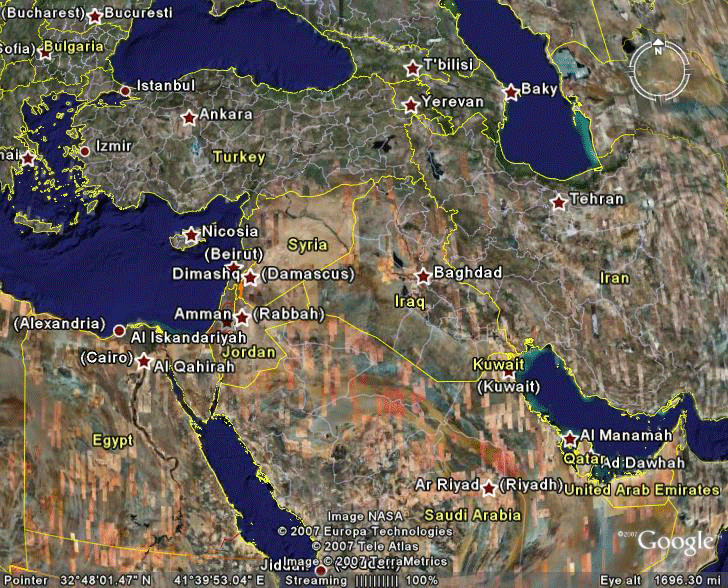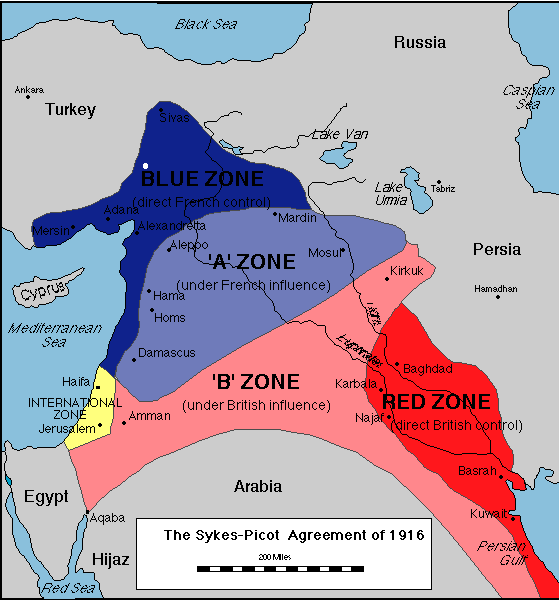
Click on Union Jack to learn more
about Sir Mark Sykes


Click on French flag to learn more
about Francois Picot
 Click on Union Jack to learn more about Sir Mark Sykes |
 |
 Click on French flag to learn more about Francois Picot |

The Agreement had two main facets, one concerning Anglo-French relations and possessions in the Middle East and the other regarding the interaction between the Anglo-French allies and the indigenous Arabs. However it is important to recognize that the Agreement was only between the French and the British. It refers to the Arabs but does not include them as participants in the Agreement. In this Agreement France and Great Britain divided the areas currently known as Palestine/Israel, Jordan, Lebanon, Syria and Iraq into five zones of influence. The terms of the Sykes-Picot Agreement are as follows (the specifications of blue, red, A and B zones refer to the map below):
1. In zones A and B (roughly corresponding to modern day Syria and Iraq-Jordan respectively) the western powers would an independent Arab State to rule*, but France would have exclusive influence, economic and political, in zone A and Britain in zone B.
2. France and Britain were given the right to establish governments in their areas of influence, in arrangement with the Arab State
3. The area of Palestine was reserved for international administration.
4. Deals with ports and water supply accorded to Great Britain.
5. Details British trading rights.
6. Considers railway rights and the Baghdad Railway.
7. Gives Britain the right to build, control and use a railway connecting Baghdad with Haifa.
8. Lists the agreement concerning custom tariffs, custom barriers and custom duties in the four zones influenced by the French and British.
9. States that France will not cede its influence in the blue area or in area A to any party other than the Arab State without the approval of the British government.
10. The British and French agreed that no other nation would be allowed to gain control over territories in the Arabian peninsula
11. Concerns the method for future negotiations with the Arab State.
12. Contains the Anglo-French agreement to look into controlling the importation of arms into Arab territories.
